Do you have a question about the Honda CBR150R and is the answer not in the manual?
Provides foundational details on motorcycle specifications, safety, and general procedures.
Covers essential safety precautions for working with the motorcycle and its components.
Outlines the standard procedures and guidelines for servicing the motorcycle.
Details how to identify the motorcycle's frame and engine serial numbers.
Lists the technical specifications for the motorcycle's dimensions, frame, and engine.
Specifies the required torque settings for various fasteners and components.
Lists specialized tools required for maintenance and repair procedures.
Identifies locations requiring lubrication and specific seal points in the engine and frame.
Illustrates the correct routing for cables and electrical harnesses on the motorcycle.
Explains the function and components of the crankcase and exhaust emission control systems.
Diagram showing the location of major body panels on the motorcycle.
General service notes and warnings specific to the frame, body panels, and exhaust.
Guides for diagnosing and resolving issues with excessive exhaust noise or poor performance.
Procedure for removing and installing the passenger seat.
Procedure for removing and installing the driver seat.
Procedure for removing and installing the grab rail.
Procedure for removing and installing the rear cowl assembly.
Procedure for removing and installing the rear fender.
Procedure for removing and installing the under cowl.
Procedure for removing and installing the middle cowl.
Procedure for removing and installing the front fender.
Procedure for removing and installing the upper cowl assembly.
Steps to remove the exhaust system components.
General safety and service notes for maintenance procedures.
Key specifications for maintenance items like spark plugs and free play.
Recommended maintenance intervals based on mileage and time.
Procedure for inspecting and replacing fuel lines.
Procedure for checking and adjusting throttle grip free play.
Inspection and lubrication of the carburetor choke system.
Steps for removing, cleaning, and replacing the air cleaner element.
Procedure for draining deposits from the crankcase breather tube.
Procedure for removing, inspecting, and reusing spark plugs.
Procedure for checking and adjusting valve clearance with the engine cold.
Procedure for checking the engine oil level.
Steps for draining and refilling the engine oil.
Procedure for checking the coolant level in the reserve tank.
Checks for radiator passage, coolant leakage, and hose condition.
Procedure for checking and adjusting drive chain slack.
Guidance on checking brake fluid levels and potential causes for low levels.
Procedure for inspecting brake pads for wear.
Checking the brake lever/pedal for sponginess and inspecting hoses.
Procedure for adjusting the headlight beam vertically.
Inspection of the clutch cable and lever for play and damage.
Inspection of the side stand for freedom of movement and lubrication.
Checks for front and rear suspension leaks, damage, or loose fasteners.
Inspection of tires for damage and wheels for trueness.
Procedure to check steering head bearings for smooth operation.
Schematic illustrating the lubrication system flow pattern.
General notes on servicing the lubrication system and oil pump.
Key specifications for engine oil capacity and oil pump clearances.
Specified torque for the oil pump bolt.
Diagnosing issues like low oil level, oil contamination, and oil leaks.
Procedure for removing and disassembling the oil pump.
Checking oil pump clearances against service limits.
Steps for assembling the oil pump components.
Procedure for installing the assembled oil pump.
General safety precautions and notes for fuel system service.
Diagnosing issues like engine stalls, poor performance, and fuel mixture problems.
Procedure for removing and installing the fuel tank.
Procedure for inspecting the fuel auto valve using a vacuum pump.
Steps for removing and installing the air cleaner housing.
Procedure for removing and replacing the sub-air cleaner element.
Steps to disconnect and remove the carburetor.
Detailed steps for disassembling the carburetor components.
Procedure for reassembling the carburetor components.
Steps for installing the carburetor back onto the motorcycle.
Procedure for adjusting the pilot screw for proper idle speed.
Checking the secondary air supply system for proper function.
Diagram illustrating the flow of coolant through the system.
General warnings and cautions regarding coolant and system service.
Details coolant capacity, radiator cap pressure, and thermostat opening points.
Specified torque for the water pump impeller.
Lists tools required for cooling system maintenance.
Diagnosing issues like engine overheating, temperature too low, and coolant leaks.
Procedure for removing and testing the thermostat's operation.
Steps for removing the radiator and cooling fan assembly.
Procedure for removing and installing the radiator reserve tank.
Checking the water pump's mechanical seal for leakage.
Procedure for removing and installing the water pump cover.
Preparation and procedure for replacing the coolant and bleeding the system.
General notes and warnings for engine removal and installation.
Engine dry weight and oil capacity specifications.
Specified torque for engine mounting bolts and nuts.
Detailed steps for safely removing the engine from the motorcycle frame.
Procedure for installing the engine back into the motorcycle frame.
General notes on servicing the clutch and gearshift linkage.
Clutch specifications including lever play, disc thickness, and plate warpage.
Specified torque for clutch and gearshift linkage fasteners.
Lists specialized tools for clutch system service.
Diagnosing common clutch operation issues like slipping or hard shifting.
Procedure for removing the right crankcase cover to access the clutch.
Removal and inspection of the clutch lifter arm and related components.
Steps for removing the clutch assembly components.
Inspection of the clutch center for wear or damage.
Inspection of the clutch outer for nicks and wear.
Inspection of the judder spring and seat for distortion or damage.
Measuring the mainshaft OD at the clutch outer guide.
Removal and installation procedures for the gearshift linkage.
Procedure for removing and installing the primary drive gear.
Procedure for installing the clutch lifter arm.
Procedure for installing the right crankcase cover.
Schematic showing the layout of the alternator, starter clutch, and related components.
General notes on servicing the alternator, flywheel, and starter clutch.
Specified torque for stator bolts, flywheel nut, and starter clutch bolts.
Lists specialized tools for alternator and starter clutch service.
Diagnosing issues when the engine does not turn or has a faulty starter clutch.
Procedure for removing the left crankcase cover.
Steps for removing the stator assembly.
Procedure for installing the stator assembly.
Steps for removing the flywheel using specialized tools.
Procedure for removing the starter clutch assembly.
Procedure for installing the starter clutch assembly.
Procedure for installing the flywheel.
Procedure for installing the left crankcase cover.
General notes on servicing the cylinder head and valves.
Technical specifications for cylinder compression, valve clearance, and camshaft dimensions.
Specified torque for cylinder head and related fasteners.
Lists specialized tools for cylinder head and valve service.
Diagnosing engine top-end issues like low compression, excessive smoke, or noise.
Steps for removing the cylinder head assembly.
Procedure for removing the camshaft assembly.
Removal and inspection of the cam chain tensioner lifter.
Steps for disassembling the cylinder head.
Inspection of camshaft and holder for wear and clearance.
Inspection of valve lifters and their bores for wear or damage.
Measuring the free length of the valve spring.
Checking the cylinder head for cracks and warpage.
Inspection of valves for trueness, wear, and stem condition.
Checking valve guides for wear and calculating stem-to-guide clearance.
Procedure for replacing valve guides.
Procedure for inspecting valve seat width and contact pattern.
Steps for refacing valve seats using specialized cutters.
Procedure for assembling the cylinder head components.
Steps for installing the cylinder head onto the cylinder.
Procedure for installing the camshaft and checking its rotation.
General notes on servicing cylinder and piston components.
Diagnosing cylinder and piston issues like low compression, smoke, or noise.
Steps for removing the cylinder.
Measuring cylinder bore for wear, out-of-round, and taper.
Procedure for removing the piston from the cylinder.
Steps for installing piston rings and the piston into the cylinder.
Procedure for installing the cylinder onto the piston.
General notes on servicing the transmission, shift fork, and shift drum.
Transmission gear and bushing clearances and dimensions.
Lists specialized tools for transmission disassembly and assembly.
Diagnosing transmission issues like excessive noise, hard shifting, or jumping out of gear.
Steps for disassembling the transmission components.
Inspection of gear teeth, dogs, and holes for wear or damage.
Inspection of bushings for wear or damage.
Inspection of mainshaft and countershaft spline grooves and sliding surfaces.
Inspection of the shift drum and its journal for wear or damage.
Inspection of shift forks for deformation and claw thickness.
Checking the shift fork shaft for damage and straightness.
Checking transmission bearings for smooth rotation and secure fit.
Procedure for replacing transmission bearings.
Steps for assembling the transmission components.
Procedure for assembling the countershaft with gears and washers.
General notes on servicing the crankshaft and balancer.
Specifications for connecting rod and crankshaft runout.
Lists specialized tools for crankshaft and balancer service.
Diagnosing excessive noise or abnormal vibration related to crankshaft or balancer.
Steps for safely removing the crankshaft and balancer.
Procedure for measuring crankshaft runout using a dial indicator.
Measuring the side clearance of the connecting rod big end.
Measuring the radial clearance of the connecting rod big end.
Inspection of the balancer gear for wear or damage.
Checking crankshaft and balancer bearings for smooth rotation.
Procedure for replacing crankshaft and balancer bearings.
General notes on servicing the front wheel, fork, and steering stem.
Specifications for tire tread, tire pressure, axle/rim runout, and fork fluid.
Specified torque for front axle, brake disc, fork, and handlebar fasteners.
Lists specialized tools for front wheel, suspension, and steering service.
Diagnosing issues like hard steering, wheel wobbling, or front suspension noise.
Steps for removing the handlebar components.
Procedure for installing the handlebar components.
Steps for removing the front wheel.
Inspection of the axle, wheel bearings, and wheel balance.
Steps for removing the front fork.
Procedure for disassembling the front fork components.
Inspection of fork spring, pipe, slider, and piston.
Procedure for assembling the front fork components.
Steps for removing the steering stem.
Procedure for replacing steering head bearing races.
Procedure for replacing the bottom cone race.
Procedure for installing the steering stem.
Procedure for measuring and adjusting steering bearing preload.
General notes on servicing the rear wheel, suspension, and shock absorber.
Specifications for tire tread, tire pressure, axle/rim runout, and drive chain slack.
Specified torque for rear axle, sprocket, brake disc, and suspension fasteners.
Lists specialized tools for rear wheel and suspension service.
Diagnosing issues like wobble, vibration, soft or hard suspension, and steering alignment.
Steps for removing the rear wheel.
Inspection of axle, rim runout, and wheel balance.
Procedure for checking and adjusting wheel balance.
Steps for disassembling the rear wheel components.
Procedure for removing the driven flange bearing and collar.
Steps for removing wheel bearings.
Procedure for assembling the rear wheel components.
Procedure for installing the driven flange assembly.
Steps for assembling the wheel with brake disc and dust seals.
Steps for removing the rear shock absorber.
Visual inspection of the shock absorber for damage.
Procedure for installing the shock absorber.
Steps for removing the swingarm.
Procedure for disassembling the swingarm components.
Procedure for assembling the swingarm.
Procedure for installing the swingarm onto the frame.
General notes on brake system maintenance and safety precautions.
Specifications for brake fluid, pads, discs, and caliper dimensions.
Specified torque for brake system fasteners.
Lists the snap ring pliers required for brake system service.
Diagnosing brake lever/pedal issues, brake drag, and system contamination.
Procedure for replacing brake fluid and bleeding air from the hydraulic system.
Inspection of brake pads and discs for wear and damage.
Steps for replacing the front brake pads.
Steps for replacing the rear brake pads.
Procedure for removing the front master cylinder.
Procedure for removing the rear master cylinder.
Steps for removing the front brake caliper assembly.
Steps for removing the rear brake caliper assembly.
Procedure for removing the brake pedal assembly.
Schematic illustrating the charging system components and connections.
General notes and warnings regarding battery and charging system.
Diagnosing battery condition and charging system faults.
Steps for safely removing the battery.
Procedure for measuring battery voltage.
Guidelines and precautions for charging the battery.
Checking charging voltage and output.
Procedure for checking battery current leakage.
Checking the resistance of the alternator charging and lighting coils.
Checking the regulator/rectifier terminals and voltage output.
Schematic illustrating the ignition system components.
General notes and cautions for ignition system service.
Diagnosing ignition issues like no spark or low peak voltage.
General inspection steps for the ignition system.
Procedure for measuring the primary peak voltage of the ignition coil.
Procedure for measuring the peak voltage of the ignition pulse generator.
Steps for removing and installing the ignition coil.
Procedure for replacing the ignition control module (ICM).
Procedure for checking and adjusting ignition timing.
Schematic illustrating the electric starter system components.
General notes and warnings for servicing the starter motor.
Diagnosing issues when the starter motor will not turn or turns slowly.
Steps for removing the starter motor.
Procedure for disassembling and inspecting the starter motor.
Checking the starter relay switch operation and voltage.
Procedure for checking the continuity of the clutch/neutral diode.
Diagram showing the location of lights, meters, and switches.
General notes for inspecting lights, meters, and switches.
Diagnosing headlight issues like not coming on or beam not shifting.
Procedure for replacing headlight, turn signal, and tail/brake light bulbs.
Steps for removing the combination meter assembly.
Checking continuity of the ignition switch in various positions.
Checking continuity of lighting, dimmer, turn signal, horn, and starter switches.
Checking continuity of the front and rear brake light switches.
Checking the neutral indicator and switch for proper operation.
Inspection of the fuel meter and fuel unit for proper function.
Procedure for checking the horn operation.
Checking the turn signal relay for proper operation.
Checking the cooling fan motor switch for proper operation.
Checking the coolant temperature gauge and thermosensor.
Measuring the resistance of the thermosensor at different temperatures.
Checking the continuity of the clutch switch.
Checking the tachometer for continuity and voltage.
Diagnosing causes for engine starting issues.
Diagnosing causes for reduced engine power.
Diagnosing causes for poor performance at low speeds or idle.
Diagnosing causes for poor performance at high speeds.
Diagnosing causes for handling issues like heavy steering or wobbling.
Provides foundational details on motorcycle specifications, safety, and general procedures.
Covers essential safety precautions for working with the motorcycle and its components.
Outlines the standard procedures and guidelines for servicing the motorcycle.
Details how to identify the motorcycle's frame and engine serial numbers.
Lists the technical specifications for the motorcycle's dimensions, frame, and engine.
Specifies the required torque settings for various fasteners and components.
Lists specialized tools required for maintenance and repair procedures.
Identifies locations requiring lubrication and specific seal points in the engine and frame.
Illustrates the correct routing for cables and electrical harnesses on the motorcycle.
Explains the function and components of the crankcase and exhaust emission control systems.
Diagram showing the location of major body panels on the motorcycle.
General service notes and warnings specific to the frame, body panels, and exhaust.
Guides for diagnosing and resolving issues with excessive exhaust noise or poor performance.
Procedure for removing and installing the passenger seat.
Procedure for removing and installing the driver seat.
Procedure for removing and installing the grab rail.
Procedure for removing and installing the rear cowl assembly.
Procedure for removing and installing the rear fender.
Procedure for removing and installing the under cowl.
Procedure for removing and installing the middle cowl.
Procedure for removing and installing the front fender.
Procedure for removing and installing the upper cowl assembly.
Steps to remove the exhaust system components.
General safety and service notes for maintenance procedures.
Key specifications for maintenance items like spark plugs and free play.
Recommended maintenance intervals based on mileage and time.
Procedure for inspecting and replacing fuel lines.
Procedure for checking and adjusting throttle grip free play.
Inspection and lubrication of the carburetor choke system.
Steps for removing, cleaning, and replacing the air cleaner element.
Procedure for draining deposits from the crankcase breather tube.
Procedure for removing, inspecting, and reusing spark plugs.
Procedure for checking and adjusting valve clearance with the engine cold.
Procedure for checking the engine oil level.
Steps for draining and refilling the engine oil.
Procedure for checking the coolant level in the reserve tank.
Checks for radiator passage, coolant leakage, and hose condition.
Procedure for checking and adjusting drive chain slack.
Guidance on checking brake fluid levels and potential causes for low levels.
Procedure for inspecting brake pads for wear.
Checking the brake lever/pedal for sponginess and inspecting hoses.
Procedure for adjusting the headlight beam vertically.
Inspection of the clutch cable and lever for play and damage.
Inspection of the side stand for freedom of movement and lubrication.
Checks for front and rear suspension leaks, damage, or loose fasteners.
Inspection of tires for damage and wheels for trueness.
Procedure to check steering head bearings for smooth operation.
Schematic illustrating the lubrication system flow pattern.
General notes on servicing the lubrication system and oil pump.
Key specifications for engine oil capacity and oil pump clearances.
Specified torque for the oil pump bolt.
Diagnosing issues like low oil level, oil contamination, and oil leaks.
Procedure for removing and disassembling the oil pump.
Checking oil pump clearances against service limits.
Steps for assembling the oil pump components.
Procedure for installing the assembled oil pump.
General safety precautions and notes for fuel system service.
Diagnosing issues like engine stalls, poor performance, and fuel mixture problems.
Procedure for removing and installing the fuel tank.
Procedure for inspecting the fuel auto valve using a vacuum pump.
Steps for removing and installing the air cleaner housing.
Procedure for removing and replacing the sub-air cleaner element.
Steps to disconnect and remove the carburetor.
Detailed steps for disassembling the carburetor components.
Procedure for reassembling the carburetor components.
Steps for installing the carburetor back onto the motorcycle.
Procedure for adjusting the pilot screw for proper idle speed.
Checking the secondary air supply system for proper function.
Diagram illustrating the flow of coolant through the system.
General warnings and cautions regarding coolant and system service.
Details coolant capacity, radiator cap pressure, and thermostat opening points.
Specified torque for the water pump impeller.
Lists tools required for cooling system maintenance.
Diagnosing issues like engine overheating, temperature too low, and coolant leaks.
Procedure for removing and testing the thermostat's operation.
Steps for removing the radiator and cooling fan assembly.
Procedure for removing and installing the radiator reserve tank.
Checking the water pump's mechanical seal for leakage.
Procedure for removing and installing the water pump cover.
Preparation and procedure for replacing the coolant and bleeding the system.
General notes and warnings for engine removal and installation.
Engine dry weight and oil capacity specifications.
Specified torque for engine mounting bolts and nuts.
Detailed steps for safely removing the engine from the motorcycle frame.
Procedure for installing the engine back into the motorcycle frame.
General notes on servicing the clutch and gearshift linkage.
Clutch specifications including lever play, disc thickness, and plate warpage.
Specified torque for clutch and gearshift linkage fasteners.
Lists specialized tools for clutch system service.
Diagnosing common clutch operation issues like slipping or hard shifting.
Procedure for removing the right crankcase cover to access the clutch.
Removal and inspection of the clutch lifter arm and related components.
Steps for removing the clutch assembly components.
Inspection of the clutch center for wear or damage.
Inspection of the clutch outer for nicks and wear.
Inspection of the judder spring and seat for distortion or damage.
Measuring the mainshaft OD at the clutch outer guide.
Removal and installation procedures for the gearshift linkage.
Procedure for removing and installing the primary drive gear.
Procedure for installing the clutch lifter arm.
Procedure for installing the right crankcase cover.
Schematic showing the layout of the alternator, starter clutch, and related components.
General notes on servicing the alternator, flywheel, and starter clutch.
Specified torque for stator bolts, flywheel nut, and starter clutch bolts.
Lists specialized tools for alternator and starter clutch service.
Diagnosing issues when the engine does not turn or has a faulty starter clutch.
Procedure for removing the left crankcase cover.
Steps for removing the stator assembly.
Procedure for installing the stator assembly.
Steps for removing the flywheel using specialized tools.
Procedure for removing the starter clutch assembly.
Procedure for installing the starter clutch assembly.
Procedure for installing the flywheel.
Procedure for installing the left crankcase cover.
General notes on servicing the cylinder head and valves.
Technical specifications for cylinder compression, valve clearance, and camshaft dimensions.
Specified torque for cylinder head and related fasteners.
Lists specialized tools for cylinder head and valve service.
Diagnosing engine top-end issues like low compression, excessive smoke, or noise.
Steps for removing the cylinder head assembly.
Procedure for removing the camshaft assembly.
Removal and inspection of the cam chain tensioner lifter.
Steps for disassembling the cylinder head.
Inspection of camshaft and holder for wear and clearance.
Inspection of valve lifters and their bores for wear or damage.
Measuring the free length of the valve spring.
Checking the cylinder head for cracks and warpage.
Inspection of valves for trueness, wear, and stem condition.
Checking valve guides for wear and calculating stem-to-guide clearance.
Procedure for replacing valve guides.
Procedure for inspecting valve seat width and contact pattern.
Steps for refacing valve seats using specialized cutters.
Procedure for assembling the cylinder head components.
Steps for installing the cylinder head onto the cylinder.
Procedure for installing the camshaft and checking its rotation.
General notes on servicing cylinder and piston components.
Diagnosing cylinder and piston issues like low compression, smoke, or noise.
Steps for removing the cylinder.
Measuring cylinder bore for wear, out-of-round, and taper.
Procedure for removing the piston from the cylinder.
Steps for installing piston rings and the piston into the cylinder.
Procedure for installing the cylinder onto the piston.
General notes on servicing the transmission, shift fork, and shift drum.
Transmission gear and bushing clearances and dimensions.
Lists specialized tools for transmission disassembly and assembly.
Diagnosing transmission issues like excessive noise, hard shifting, or jumping out of gear.
Steps for disassembling the transmission components.
Inspection of gear teeth, dogs, and holes for wear or damage.
Inspection of bushings for wear or damage.
Inspection of mainshaft and countershaft spline grooves and sliding surfaces.
Inspection of the shift drum and its journal for wear or damage.
Inspection of shift forks for deformation and claw thickness.
Checking the shift fork shaft for damage and straightness.
Checking transmission bearings for smooth rotation and secure fit.
Procedure for replacing transmission bearings.
Steps for assembling the transmission components.
Procedure for assembling the countershaft with gears and washers.
General notes on servicing the crankshaft and balancer.
Specifications for connecting rod and crankshaft runout.
Lists specialized tools for crankshaft and balancer service.
Diagnosing excessive noise or abnormal vibration related to crankshaft or balancer.
Steps for safely removing the crankshaft and balancer.
Procedure for measuring crankshaft runout using a dial indicator.
Measuring the side clearance of the connecting rod big end.
Measuring the radial clearance of the connecting rod big end.
Inspection of the balancer gear for wear or damage.
Checking crankshaft and balancer bearings for smooth rotation.
Procedure for replacing crankshaft and balancer bearings.
General notes on servicing the front wheel, fork, and steering stem.
Specifications for tire tread, tire pressure, axle/rim runout, and fork fluid.
Specified torque for front axle, brake disc, fork, and handlebar fasteners.
Lists specialized tools for front wheel, suspension, and steering service.
Diagnosing issues like hard steering, wheel wobbling, or front suspension noise.
Steps for removing the handlebar components.
Procedure for installing the handlebar components.
Steps for removing the front wheel.
Inspection of the axle, wheel bearings, and wheel balance.
Steps for removing the front fork.
Procedure for disassembling the front fork components.
Inspection of fork spring, pipe, slider, and piston.
Procedure for assembling the front fork components.
Steps for removing the steering stem.
Procedure for replacing steering head bearing races.
Procedure for replacing the bottom cone race.
Procedure for installing the steering stem.
Procedure for measuring and adjusting steering bearing preload.
General notes on servicing the rear wheel, suspension, and shock absorber.
Specifications for tire tread, tire pressure, axle/rim runout, and drive chain slack.
Specified torque for rear axle, sprocket, brake disc, and suspension fasteners.
Lists specialized tools for rear wheel and suspension service.
Diagnosing issues like wobble, vibration, soft or hard suspension, and steering alignment.
Steps for removing the rear wheel.
Inspection of axle, rim runout, and wheel balance.
Procedure for checking and adjusting wheel balance.
Steps for disassembling the rear wheel components.
Procedure for removing the driven flange bearing and collar.
Steps for removing wheel bearings.
Procedure for assembling the rear wheel components.
Procedure for installing the driven flange assembly.
Steps for assembling the wheel with brake disc and dust seals.
Steps for removing the rear shock absorber.
Visual inspection of the shock absorber for damage.
Procedure for installing the shock absorber.
Steps for removing the swingarm.
Procedure for disassembling the swingarm components.
Procedure for assembling the swingarm.
Procedure for installing the swingarm onto the frame.
General notes on brake system maintenance and safety precautions.
Specifications for brake fluid, pads, discs, and caliper dimensions.
Specified torque for brake system fasteners.
Lists the snap ring pliers required for brake system service.
Diagnosing brake lever/pedal issues, brake drag, and system contamination.
Procedure for replacing brake fluid and bleeding air from the hydraulic system.
Inspection of brake pads and discs for wear and damage.
Steps for replacing the front brake pads.
Steps for replacing the rear brake pads.
Procedure for removing the front master cylinder.
Procedure for removing the rear master cylinder.
Steps for removing the front brake caliper assembly.
Steps for removing the rear brake caliper assembly.
Procedure for removing the brake pedal assembly.
Schematic illustrating the charging system components and connections.
General notes and warnings regarding battery and charging system.
Diagnosing battery condition and charging system faults.
Steps for safely removing the battery.
Procedure for measuring battery voltage.
Guidelines and precautions for charging the battery.
Checking charging voltage and output.
Procedure for checking battery current leakage.
Checking the resistance of the alternator charging and lighting coils.
Checking the regulator/rectifier terminals and voltage output.
Schematic illustrating the ignition system components.
General notes and cautions for ignition system service.
Diagnosing ignition issues like no spark or low peak voltage.
General inspection steps for the ignition system.
Procedure for measuring the primary peak voltage of the ignition coil.
Procedure for measuring the peak voltage of the ignition pulse generator.
Steps for removing and installing the ignition coil.
Procedure for replacing the ignition control module (ICM).
Procedure for checking and adjusting ignition timing.
Schematic illustrating the electric starter system components.
General notes and warnings for servicing the starter motor.
Diagnosing issues when the starter motor will not turn or turns slowly.
Steps for removing the starter motor.
Procedure for disassembling and inspecting the starter motor.
Checking the starter relay switch operation and voltage.
Procedure for checking the continuity of the clutch/neutral diode.
Diagram showing the location of lights, meters, and switches.
General notes for inspecting lights, meters, and switches.
Diagnosing headlight issues like not coming on or beam not shifting.
Procedure for replacing headlight, turn signal, and tail/brake light bulbs.
Steps for removing the combination meter assembly.
Checking continuity of the ignition switch in various positions.
Checking continuity of lighting, dimmer, turn signal, horn, and starter switches.
Checking continuity of the front and rear brake light switches.
Checking the neutral indicator and switch for proper operation.
Inspection of the fuel meter and fuel unit for proper function.
Procedure for checking the horn operation.
Checking the turn signal relay for proper operation.
Checking the cooling fan motor switch for proper operation.
Checking the coolant temperature gauge and thermosensor.
Measuring the resistance of the thermosensor at different temperatures.
Checking the continuity of the clutch switch.
Checking the tachometer for continuity and voltage.
Diagnosing causes for engine starting issues.
Diagnosing causes for reduced engine power.
Diagnosing causes for poor performance at low speeds or idle.
Diagnosing causes for poor performance at high speeds.
Diagnosing causes for handling issues like heavy steering or wobbling.
| Engine Type | Liquid-cooled, 4-stroke, DOHC, single-cylinder |
|---|---|
| Displacement | 149.16 cc |
| Bore x Stroke | 57.3 mm x 57.8 mm |
| Compression Ratio | 11.3:1 |
| Transmission | 6-speed |
| Fuel System | PGM-FI (Programmed Fuel Injection) |
| Front Suspension | Telescopic fork |
| Front Brake | Disc |
| Rear Brake | Disc |
| Rear Tire | 130/70-17 |
| Fuel Tank Capacity | 12 liters |
| Curb Weight | 139 kg |
| Max Power | 17.1 PS @ 9, 000 rpm |
| Max Torque | 14.4 Nm @ 7, 000 rpm |
| Rear Suspension | Monoshock |
| Front Tire | 100/80-17 |
| Length x Width x Height | 1, 983 x 700 x 1, 077 mm |
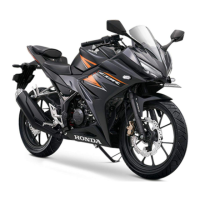
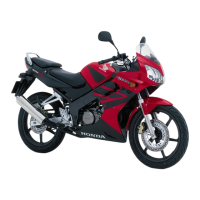
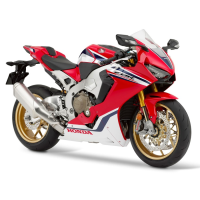
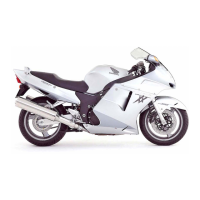
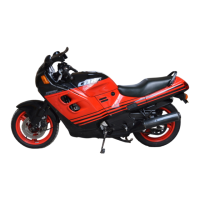
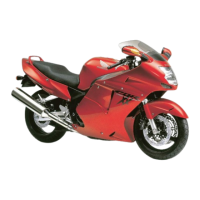
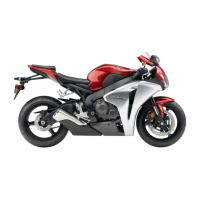
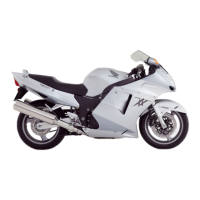
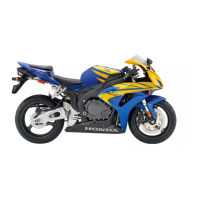
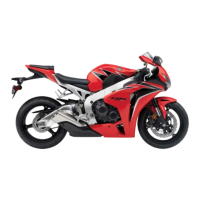
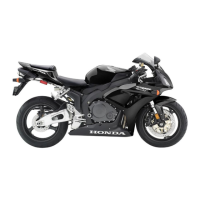
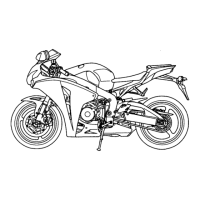
